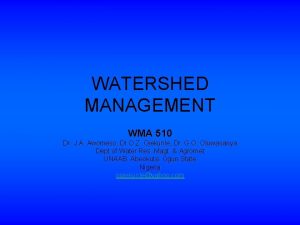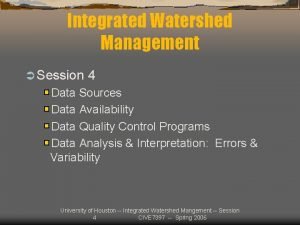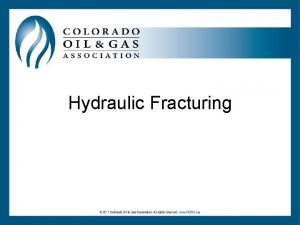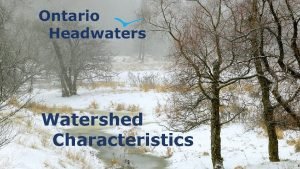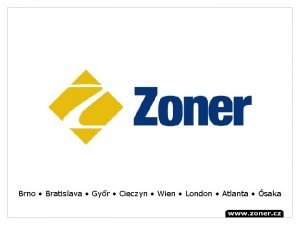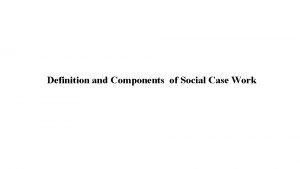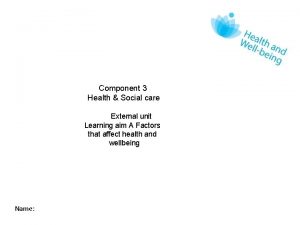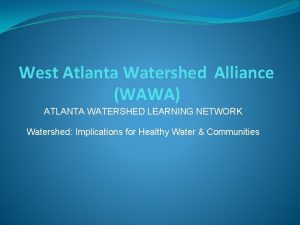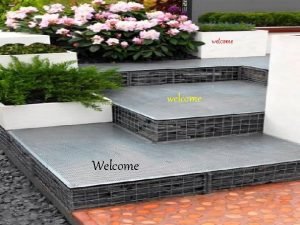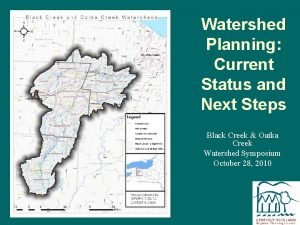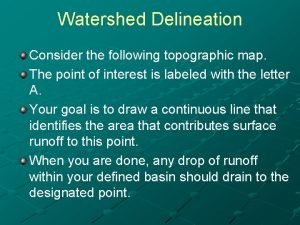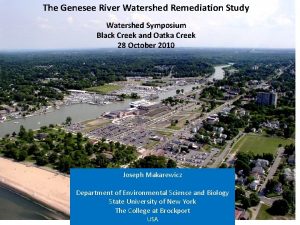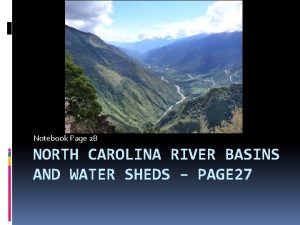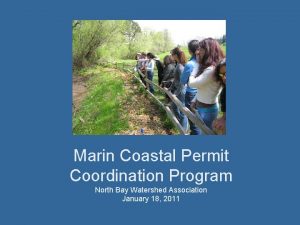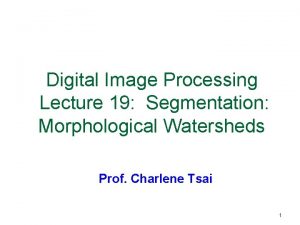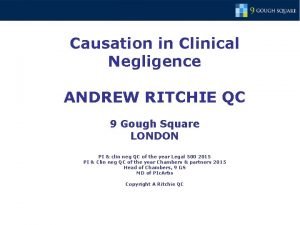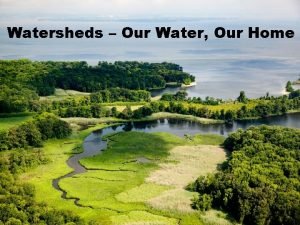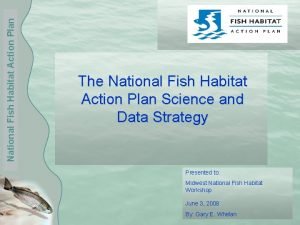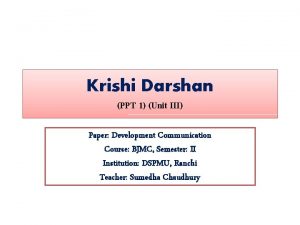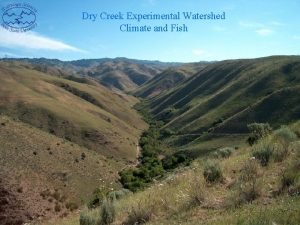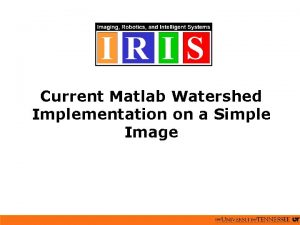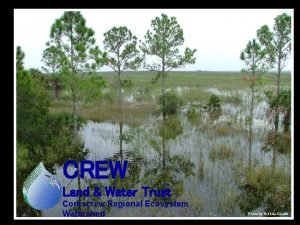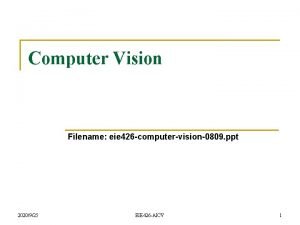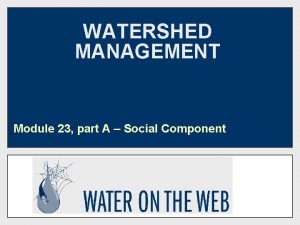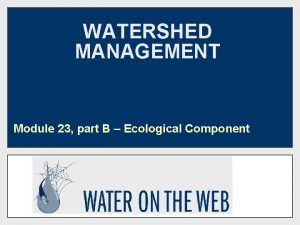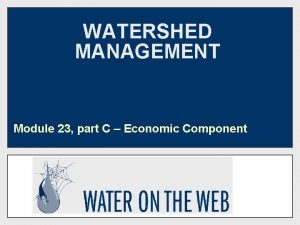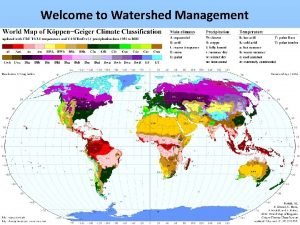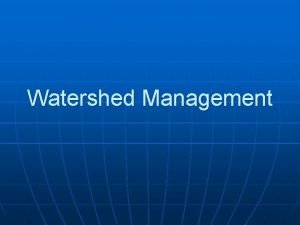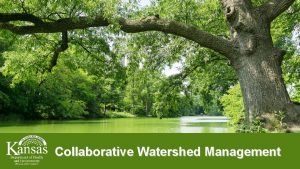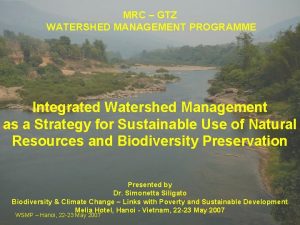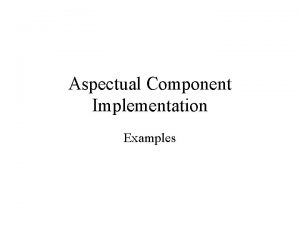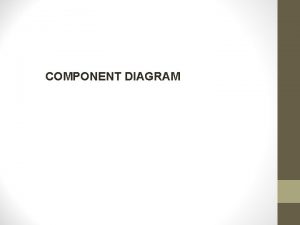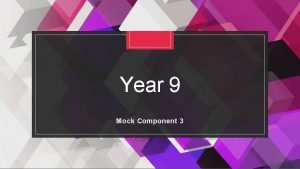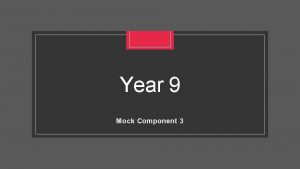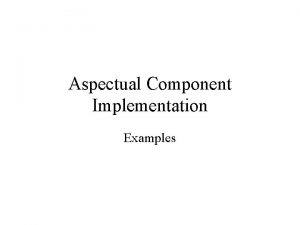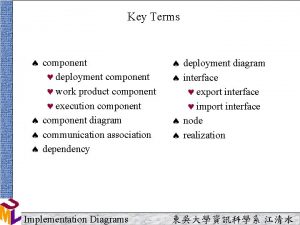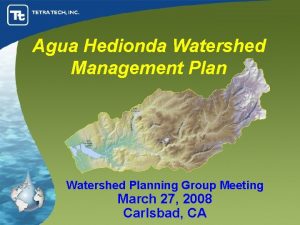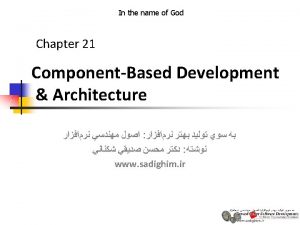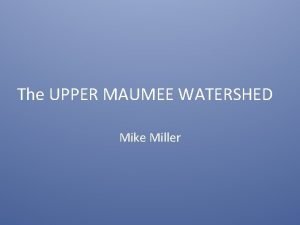WATERSHED MANAGEMENT Module 23 part A Social Component
































- Slides: 32

WATERSHED MANAGEMENT Module 23, part A – Social Component

Watershed management organization · Social Component · Ecological Component · Economic Component Developed by: Desotelle Updated: 10/2004 U 5 -m 23 a-s 2

Watershed management structure · A strong watershed structure · uses sound science · facilitates communication and partnerships · fosters actions that are well planned and cost effective · stimulates actions and tracks results Developed by: Desotelle Updated: 10/2004 U 5 -m 23 a-s 3

Watershed management organization · Social components · Organizational Set-up · Assessment · Planning · Implementation · Evaluation Developed by: Desotelle Updated: 10/2004 U 5 -m 23 a-s 4

Social organization component The most common watershed management structure is a combination of both government and citizen directed groups. This type of organization does not usually have regulatory authority, but makes recommendations to local government agencies to ensure that management strategies selected by a diverse group of stakeholders is implemented. Developed by: Desotelle Updated: 10/2004 U 5 -m 23 a-s 5

Organizational set-up · Goal of local watershed management organizations is to protect, preserve, restore natural resources through · Assessment · Planning · Implementation · Evaluation · The core of the process for achieving these goals is to build a watershed partnership Developed by: Desotelle Updated: 10/2004 U 5 -m 23 a-s 6

Build a partnership · Recruit a diverse group of stakeholders who are affected by and who benefit from the watershed. This includes, but is not limited too: · Local government officials · Residents · Scientists · Businesses · Nonprofit agencies · State agencies · Federal agencies · Non-residents and concerned citizens Developed by: Desotelle Updated: 10/2004 U 5 -m 23 a-s 7

Recruit a multi-disciplinary group to serve · Publicize the watershed organization to encourage citizen participation · Call or write to area businesses (e. g. Chamber of Commerce source) to solicit representatives to serve on the planning committee · Invite local, state, federal government agencies to share personnel who can provide technical advice · Encourage area schools and universities to participate Developed by: Desotelle Updated: 10/2004 U 5 -m 23 a-s 8

Establish a citizen’s advisory committee · A diverse group of stakeholders from public and private sector · Has authority to develop and implement a plan · Provides recommendations to a decisionmaking body (e. g. , county board, city council, nonprofit board, local grass roots authority) · Provides media relations to increase watershed awareness (e. g. , press releases) · Coordinates programs to engage watershed volunteers (i. e. , clean-ups, monitoring, fundraising, etc. ) Developed by: Desotelle Updated: 10/2004 U 5 -m 23 a-s 9

Establish a technical advisory committee · A group usually of scientific professionals including public agency staff with expertise in scientific matters associated with watershed management · Interprets scientific data for the watershed management organization · Assists with evaluation of monitoring data and monitoring needs · Provides assessments and coordination of approved implementation projects Developed by: Desotelle Updated: 10/2004 U 5 -m 23 a-s 10

Joint Powers Agreement · Government plays an essential role especially when the watershed extends over more than one political jurisdiction · Government often provides financial and technical resources necessary for a watershed management organization to sustain themselves · Joint powers agreements (political agreement) help promote better coordination and sharing of data, staff, stakeholders, and the planning and implementation processes Developed by: Desotelle Updated: 10/2004 U 5 -m 23 a-s 11

Organizational set-up · Goal of local watershed management organizations is to protect, preserve, restore natural resources through · Assessment – What is happening in the watershed? · Planning · Implementation · Evaluation Developed by: Desotelle Updated: 10/2004 U 5 -m 23 a-s 12

Assessment – What is happening in the watershed? · What conditions are bringing the organization together? · Is it a desire to protect an undisturbed resource? · Is it a threat to a valuable resource? · Is there a need to restore a lost resource? · To answer this the organization must document the ecological, biological, chemical, and physical conditions of the watershed Developed by: Desotelle Updated: 10/2004 U 5 -m 23 a-s 13

Assessment – Document watershed conditions using sound science · Prepare a natural resource inventory · Analyze and summarize monitoring data · Interview people who have lived in the watershed for a long period and have them reflect on changes they have seen Developed by: Desotelle Updated: 10/2004 U 5 -m 23 a-s 14

Assessment – Knowledge of watershed/ecological information leads to better decision-making · a resource in good condition requires prevention management techniques to protect it from any degradation · a resource in good to moderate condition, requires protection management techniques to help sustain the existing quality of the resource by preventing further degradation · a resource in moderate to poor condition, requires restoration management techniques to help it attain an acceptable level of quality by restoring the area from previous degradation Developed by: Desotelle Updated: 10/2004 U 5 -m 23 a-s 15

What is a Natural Resource Assessment? · A method using the natural resource inventory data to rank and prioritize areas for preservation, protection, or restoration. · Varies community by community. · Eden Prairie, MN used their wetlands inventory to determine vegetative buffer widths along varying wetlands. Developed by: Desotelle Updated: 10/2004 U 5 -m 23 a-s 16

Organizational set-up · Goal of local watershed management organizations is to protect, preserve, restore natural resources through · Assessment · Planning – What needs to be done? · Implementation · Evaluation Developed by: Desotelle Updated: 10/2004 U 5 -m 23 a-s 17

Planning – What needs to be done? · A watershed plan is the document which specifies the goals, policies, and strategies for the watershed. · Goals – Statements that describe the desired future watershed condition toward which programs, activities, and decisions are directed. · Policies – The strategic steps, or intermediate ends, required to reach the watershed’s goals. · Strategies – The specific actions by which the community will achieve its goals Developed by: Desotelle Updated: 10/2004 U 5 -m 23 a-s 18

Planning – Example Goals · In Minnesota, Carver County used guidelines established by state statute to develop a set of water management goals. Some of these goals included: · Protect, preserve, and manage natural surface and groundwater storage and retention systems · Effectively and efficiently manage public capital expenditures needed to correct flooding and water quality problems · Identify and plan for means to effectively protect and improve surface and groundwater quality · Protect and enhance fish and wildlife habitat and water recreational facilities Developed by: Desotelle Updated: 10/2004 U 5 -m 23 a-s 19

Planning – Example Policies · Stormwater · Provide stormwater attenuation to minimize degradation of the water resources through a reduction in the amount and rate of surface water runoff from agricultural and urban land uses. · Wetlands · Manage and restore wetlands in the watershed to protect the values of wetland functions as determined from a wetland inventory and functional values analysis Developed by: Desotelle Updated: 10/2004 U 5 -m 23 a-s 20

Planning – Example Strategies · Stormwater · Set an impervious surface cover cap in the subwatersheds. · Add X acres of wetlands in the watershed. · Wetlands · Complete a wetland inventory and assess the values of the wetland functions for each of the watersheds · Implement a buffer ordinance for wetlands based on level of priority Developed by: Desotelle Updated: 10/2004 U 5 -m 23 a-s 21

Organizational set-up · Goal of local watershed management organizations is to protect, preserve, restore natural resources through · Assessment · Planning · Implementation – How do you get there? · Evaluation Developed by: Desotelle Updated: 10/2004 U 5 -m 23 a-s 22

Implementation – How do you get there? · The Watershed Plan is the community’s guide for project implementation. It includes: · Strategies or the tasks that need to be done in order of priority. · Time Frame for tasks to be completed. · Capital Improvement Plan which provides estimates of the funding needs for each task. Developed by: Desotelle Updated: 10/2004 U 5 -m 23 a-s 23

Implementation - Example Project Time Frame Estimated Cost Funding Source Adopt design standards to address stormwater runoff 2 years Unknown Local governments in the watershed Complete a wetland inventory 1 year $50, 000 State, County Implement a buffer ordinance for wetlands based on level of priority 2 years $10, 000 Local governments in the watershed Developed by: Desotelle Updated: 10/2004 U 5 -m 23 a-s 24

Organizational set-up · Goal of local watershed management organizations is to protect, preserve, restore natural resources through · Assessment · Planning · Implementation · Evaluation – Did you make it? Developed by: Desotelle Updated: 10/2004 U 5 -m 23 a-s 25

Evaluation - Did you make it? · Evaluation is the key to measuring success of the watershed plan and toward making appropriate adjustments. Evaluation is important in various components of the watershed management including: · administration · water quality monitoring · mid-course corrections · long-term maintenance Developed by: Desotelle Updated: 10/2004 U 5 -m 23 a-s 26

Evaluation · Administration component includes evaluating and publicizing the interim measures of success such as measuring how well the watershed is managed, strategies are implemented, data is gathered, and monitoring is evaluated. This may be done by · Preparing progress reports · Public awareness presentations and newsletters · Number and result of projects completed · Evaluating data and distributing results · Recommending adjustments to the plan Developed by: Desotelle Updated: 10/2004 U 5 -m 23 a-s 27

Evaluation · Water quality monitoring component is important for · assessing baseline conditions · detecting trends in ambient water quality · measuring the pollutant-removal efficiencies of bmps · demonstrating effectiveness of restoration measures · monitoring the long-term maintenance of controls Developed by: Desotelle Updated: 10/2004 U 5 -m 23 a-s 28

Evaluation · Mid-course corrections should be built into the process to periodically review all aspects of strategies including: · indications from monitoring that the problem is not being solved · other problems are created that are more difficult to control · goal(s) are reached, but it is not effective enough to reach water quality goals · measurable objectives (pollutant load reductions, hydrologic controls, etc. ) were not set correctly to solve the problem. Developed by: Desotelle Updated: 10/2004 U 5 -m 23 a-s 29

Evaluation · Ensuring long-term maintenance is often the least discussed and most difficult. Regular ongoing maintenance must be provide for to ensure success. · Maintenance programs should be self-supporting whenever possible. · Projects are more likely to succeed if supported by private sector and citizens · Demonstrating success to the public is important for ensuring support for needed local regulations Developed by: Desotelle Updated: 10/2004 U 5 -m 23 a-s 30

Evaluation · Establish evaluation criteria to assess both outcomes and process · Conduct evaluations throughout the watershed management process, not just at the end · Information gathered during other phases of watershed management (assessment, planning, implementation) can be used as part of the evaluation process · Incorporate any recommendations or insights gained from evaluations into the process right away Developed by: Desotelle Updated: 10/2004 U 5 -m 23 a-s 31

References · Center for Watershed Protection. 1998. Rapid Watershed Planning Handbook. Center for · · · · Watershed Protection. Ellicott City, Maryland. http: //www. cwp. org. Center for Watershed Protection. 1997. The Economics of Watershed Protection Techniques, Vol. 2, No. 4. Center for Watershed Protection, Ellicott City, Maryland. http: //www. cwp. org. Honachefsky, William B. 2000. Ecologically Based Municipal Land Use Planning. Lewis Publishers, Boca Raton, FL. 256 pp. Know Your Watershed. Putting Together A Watershed Management Plan – A Guide for Watershed Partners. Conservation Technology Information Center, W. Lafayette, IN. http: //www. ctic. purdue. edu/KYW/Brochures/Put. Together. html Ministry of Environment and Energy and Ministry of Natural Resources. 1993. Water Management on a Watershed Basis: Implementing an Ecosystem Approach. Ministry of Environment and Energy and Ministry of Natural Resources, Ontario, Canada. 32 pp. http: //www. ene. gov. on. ca/programs/3109 e. pdf. Minnesota Department of Natural Resources. 2004. A Quick Guide to Using Natural Resource Information. Minnesota Department of Natural Resources, St. Paul, MN. www. dnr. state. mn. us. Terrene Institute. 1996. A Watershed Approach to Urban Runoff – Handbook for Decisionmakers. Terrene Institute, Inc. Alexandria, VA. 115 pp. (Terrene Institute is no longer in operation – see http: //www. enviroscapes. com/images/communit. JPG for a poster concept). U. S. Environmental Protection Agency. 1997. Top 10 Watershed Lessons Learned. National Center for Environmental Publications and Information. 800 -490 -9198. http: //www. epa. gov/owow/lessonspdfs/top 10. pdf. Developed by: Desotelle Updated: 10/2004 U 5 -m 23 a-s 32
 Watershed management meaning
Watershed management meaning Integrated watershed management
Integrated watershed management Watershed management
Watershed management Importance of water source
Importance of water source Watershed characteristics
Watershed characteristics Atlanta watershed management
Atlanta watershed management C device module module 1
C device module module 1 Apa itu social thinking
Apa itu social thinking Social thinking social influence social relations
Social thinking social influence social relations Casework process in social work
Casework process in social work Health and social care component 3 health and wellbeing
Health and social care component 3 health and wellbeing Btec
Btec Health and social care component 2 learning aim b example
Health and social care component 2 learning aim b example Social component
Social component D
D Darryl haddock
Darryl haddock Gabion structure watershed
Gabion structure watershed Components of a watershed
Components of a watershed Watershed delineation
Watershed delineation Genesee river watershed
Genesee river watershed How many river basins are in nc
How many river basins are in nc North bay watershed association
North bay watershed association Segmentation by morphological watersheds
Segmentation by morphological watersheds Brain watershed areas
Brain watershed areas Watershed poster ideas
Watershed poster ideas Local watershed definition
Local watershed definition Watershed segmentation
Watershed segmentation History of development communication ppt
History of development communication ppt Green river (duwamish river tributary)
Green river (duwamish river tributary) Dry creek experimental watershed
Dry creek experimental watershed Watershed matlab
Watershed matlab Crew land and water trust
Crew land and water trust Watershed segmentation
Watershed segmentation
